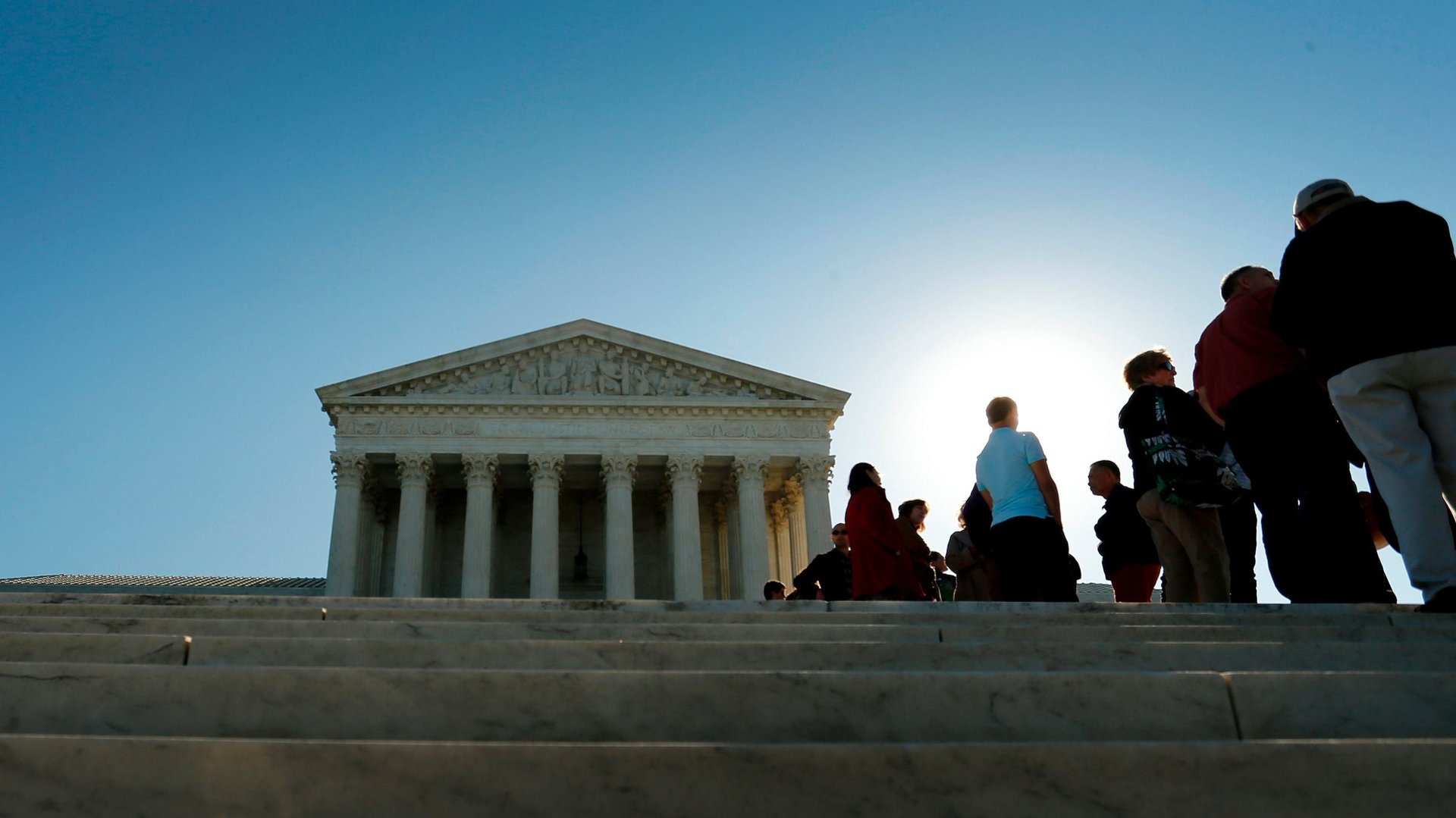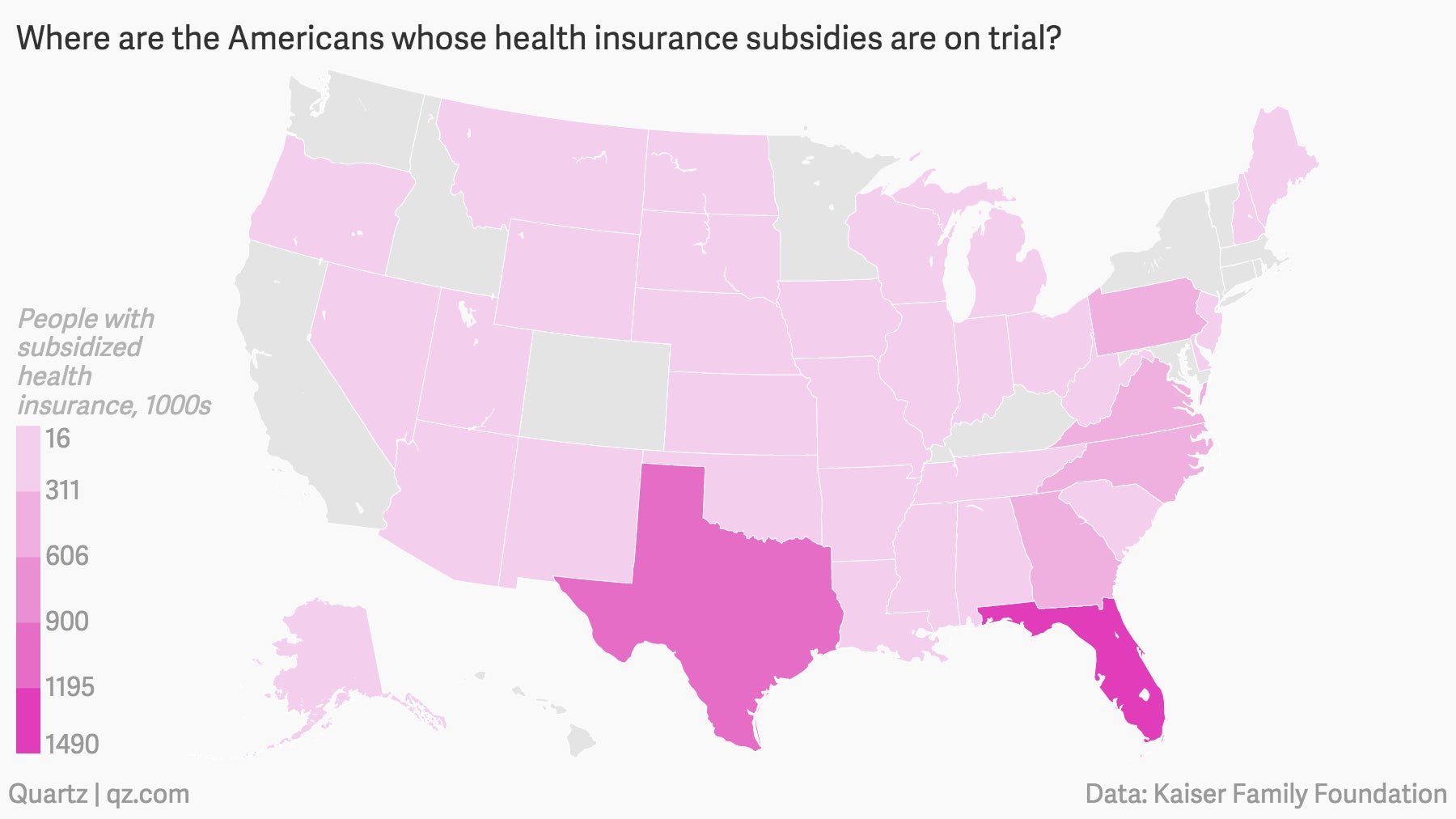Mapped: The 7.6 million Americans whose health insurance goes on trial today
Today the US Supreme Court will hear a challenge to one of the most important parts of the health care overhaul enacted in 2010—the subsidies that allow low-income Americans to purchase insurance in the 34 states where the individual marketplace is run by the federal government:


Today the US Supreme Court will hear a challenge to one of the most important parts of the health care overhaul enacted in 2010—the subsidies that allow low-income Americans to purchase insurance in the 34 states where the individual marketplace is run by the federal government:

The challenge contends that the language of the law technically forbids tax subsidies in states where the new insurance marketplaces are set up by the federal government and not the state, whether for reasons of cost or political opposition.
The US government, along with hospitals and insurance providers, say that is too narrow a reading of the law, which is designed to function only when almost all Americans, including those who who can’t afford it, have access to insurance. (For all the gory legal details of King vs. Burwell, we recommend SCOTUSBlog’s excellent coverage of the case.)
This is the three-legged stool theory of the law’s coverage provisions: First, new rules for insurance companies that prevented them from denying coverage to citizens; second, a mandate that all Americans buy health insurance (which survived a legal challenge two years ago); and third, the subsidies, provided through the exchanges, to cover those unable to afford insurance. The subsidies are available on a sliding scale for households earning between one and four times the poverty level, up to $97,000 for a family of four. This has led to a big drop in the uninsured population.
Though lower courts have ruled that the subsidies should stay, the Supreme Court surprised observers by taking on the case. And if it vacates the law (a decision is expected in June), it’s not just the people receiving the subsidies who will suffer.
This matters for people with who buy their own insurance or receive it from their employers, too. Since the insurers calculate their rates based on payments from everyone in their risk pool, the suit’s victory will likely mean higher premiums for everyone: Without subsidies, people will stop paying their bills and lose their coverage, leading to higher premiums and more dropped coverage in what the insurers refer to as a “death spiral” in their brief to the supreme court. At least, until the broken system is repaired.
There’s little the administration could do on its own to change the situation, and while Republicans in Congress have announced yet another attempt to come up with a health care alternative, it’s not clear they could actually enact it, or that President Obama would sign such a law.